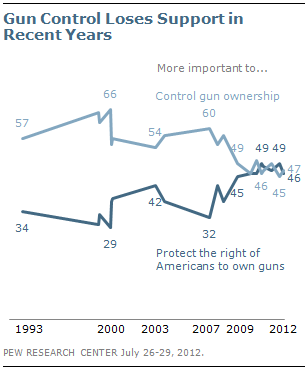After the shooting at a Portland mall on Tuesday, a woman told the Oregonian: "People were screaming and pointing and running… it was just like your typical American nightmare.” I thought about that when Jeff Ruby sent me "I Don't Want to Be Angry."
I'm glad he did; I haven't been able to write, and as someone who's written a fair amount about guns, violence, and the history, legal framework, and criminal-justice issues surrounding them, at times it's hard to know what to add, or what can be added. As a friend put it, "at what point do we just leave the flags at half-staff permanently?"
One reason: we know a lot, but what we don't pales in comparison.
1. We don't know what we want, more than at any time in the past couple decades.

2. We are learning how to predict violence, but not well enough:
Forensic psychiatry has advanced to the point where the probability of violence can be estimated about 70 percent to 80 percent of the time, wrote Mossman in a 2009 article in the Journal of Legal Medicine. But that isn’t accurate enough to rule out false positives in a random population sample or even among individuals with severe mental illness.
3. We don't really know what we're dealing with.
Incidents of mass murder have gained considerable media attention, but are not well understood in behavioral sciences. Current definitions are weak, and may include politically or ideologically motivated phenomenon. Our current understanding of the phenomenon indicates these incidents are not peculiar to only western cultures, and appear to be increasing.


